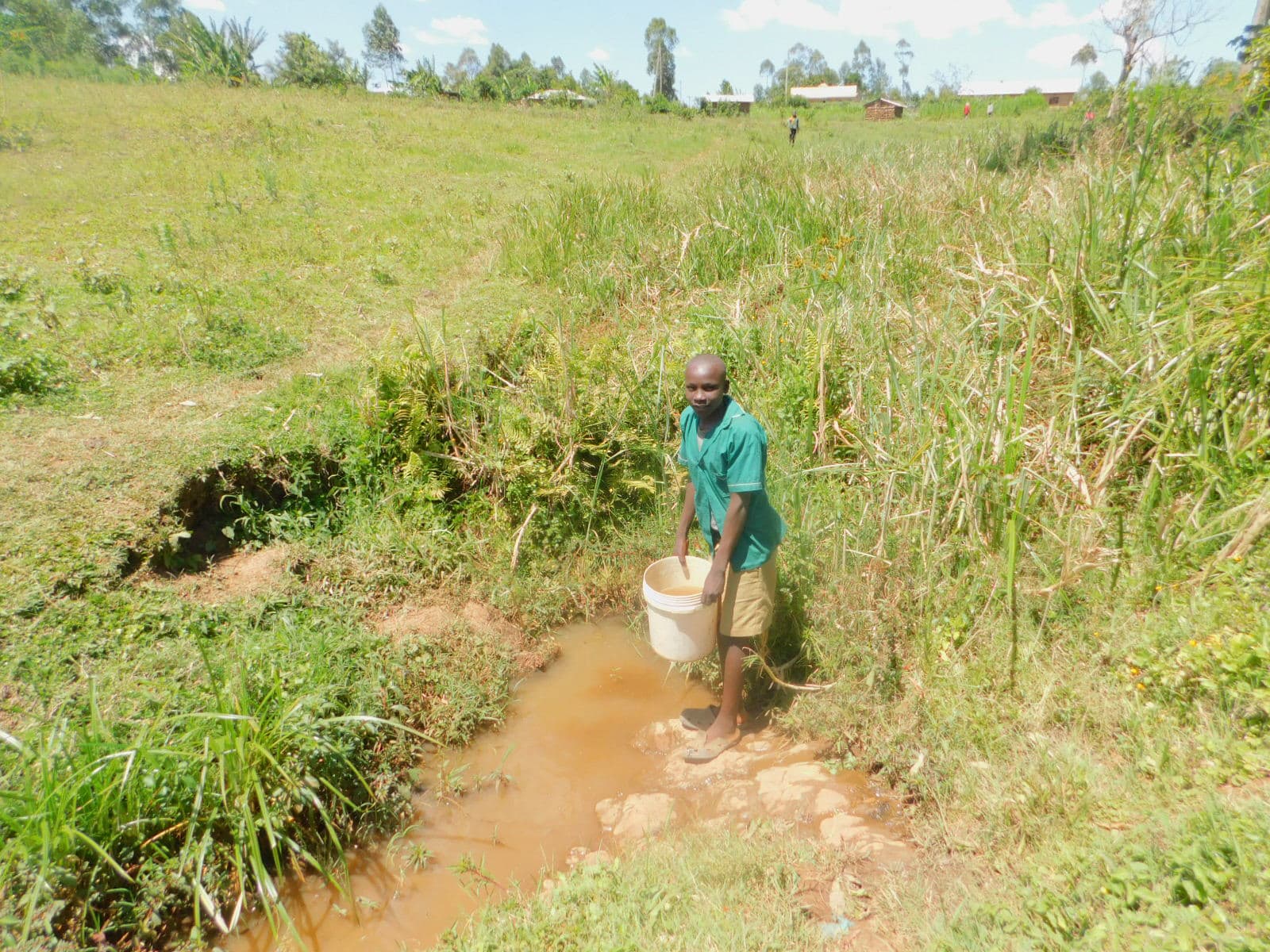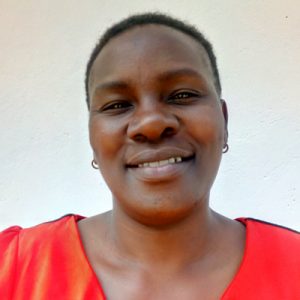It was a hot and dry day when we first toad a motorbike to Shinyikha Primary School, making the dirt road very dusty. Shinyikha Primary School is located nearby Shiyikha Market, but there was minimal activity at the market because it was too hot. The name "shinyikha" in the local dialect means "nuisance". Everything in the area was given this name because the land is swampy and most structures sink.
The school was established in 2007 by the government, and has grown to have 758 students.
Pupils arrive around 6:30am with books and water container in hand. They are asked to bring water that is used for cleaning and drinking throughout morning classes. Students break again for lunch, going back out to find more water for the afternoon.
That's because there's not enough water at school - just one small plastic tank. There isn't even safe drinking water nearby for students to walk to. There is a community member who has a well, but he is not friendly and does not allow the students to fetch water there. So, students leave class to fetch dirty water from open sources that they find in the community.

The water from these open sources dries up in the dry season, so students are forced to bring even more water from home. When that's used up, the nearest water source is a spring located three kilometers away.
To help alleviate the dangers of drinking dirty water, the school staff has some filters in their office. However, some students are too afraid to enter the staffroom and ask to drink that water, so they drink the dirty water without treatment.
So much time and energy is wasted in the search for water, and the students' health is always at risk. The students are often absent because of the lack of water at school, not wanting to carry heavy containers back and forth each day. Or, they go back home early pretending they went back out to fetch more water. Since the water they are fetching is contaminated, water-related diseases affect these students and they miss class for treatment.
What we can do:
The school cook has no dish rack because it was stolen during the school holidays. Now the dishes are being aired on the ground. The headteacher has promised us they'd construct another one. They have one handwashing facility but it's for the teachers only.
The latrine to student ratio is terrible. There are only 10 latrines for these 758 students, which is really half as much as they need.
"We have a few latrines and it gives us a hard time during break time," said Metrine.
Latrines are only cleaned once a week because of the water shortage. Most girls drop out of school early because of their menstrual cycle because they are ashamed to use the filthy latrines. They opt to stay home and often lose hope when they return to school and are not able to catch up with classwork.
Training
Training on good hygiene habits will be held for two days. The facilitator will use PHAST (participatory hygiene and sanitation transformation), ABCD (asset-based community development), CTC (child to child), lectures, group discussions, and handouts to teach health topics and ways to promote good practices within the school. The CTC method will prepare students to lead other students into healthy habits, as well as kickstart a CTC club for the school.
VIP Latrines
We will build two triple-door latrines with local materials that the school will help gather. Three doors will serve the girls while the other three serve the boys. And with a new source of water on school grounds, students and staff should have enough to keep these new latrines clean.
Handwashing Stations
We will deliver two handwashing stations to the school, and the CTC club will fill them with water on a daily basis and make sure there is always a cleaning agent such as soap or ash.
Rainwater Catchment Tank
A 50,000-liter rainwater catchment tank will help alleviate the water crisis at this school. The school will also help gather the needed materials such as sand, rocks, and water for mixing cement. Once finished, this tank can begin catching rainfall that will be used by the school’s students and staff.
We and the school strongly believe that with this assistance, standards will significantly improve. These higher standards will translate to better academic performance!

 Rainwater Catchment
Rainwater Catchment
 Rehabilitation Project
Rehabilitation Project





































